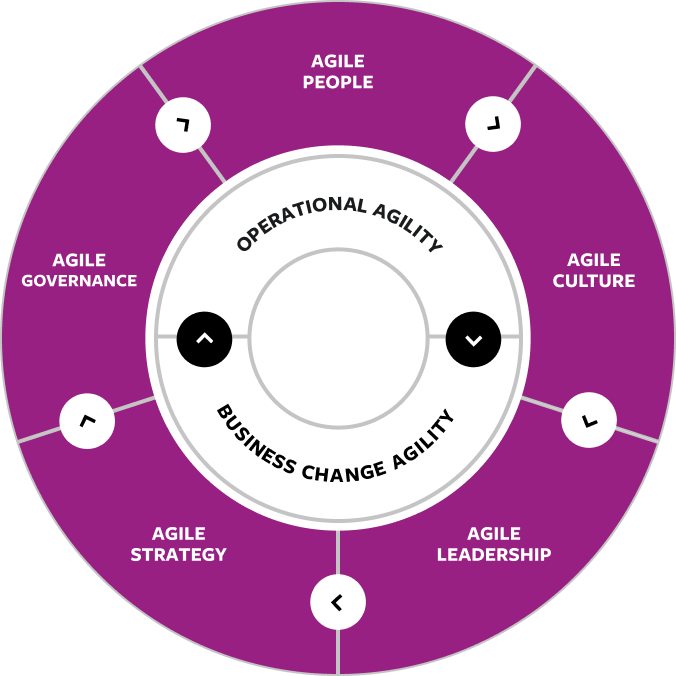
How to Enhance Business Agility with Business Intelligence Software
In today’s fast-paced and ever-changing business landscape, organizations need to be agile and adaptable to stay ahead of the competition. Business agility refers to the ability of a company to respond quickly to changes in the market, customer needs, and internal operations. One way to achieve this agility is by leveraging business intelligence (BI) software. In this article, we will discuss how to enhance business agility with business intelligence software.
What is Business Intelligence Software?
Business intelligence software is a set of tools and technologies that help organizations collect, analyze, and visualize data to make informed business decisions. BI software provides a comprehensive view of an organization’s performance, enabling managers to identify areas of improvement, optimize operations, and drive growth. With BI software, organizations can access real-time data, create interactive dashboards, and perform advanced analytics to gain insights into their business operations.
Benefits of Business Intelligence Software
The benefits of business intelligence software are numerous. Some of the most significant advantages include:
- Improved Decision-Making: BI software provides organizations with accurate and timely data, enabling managers to make informed decisions that drive business growth.
- Increased Efficiency: BI software automates many manual processes, freeing up staff to focus on higher-value tasks and improving overall productivity.
- Enhanced Customer Experience: BI software helps organizations to better understand their customers, enabling them to tailor their products and services to meet their needs and improve customer satisfaction.
- Competitive Advantage: BI software provides organizations with a competitive edge by enabling them to respond quickly to changes in the market and stay ahead of the competition.
- Cost Savings: BI software can help organizations to reduce costs by identifying areas of inefficiency and optimizing operations.
How to Enhance Business Agility with Business Intelligence Software
To enhance business agility with business intelligence software, organizations should follow these steps:
- Define Business Objectives: The first step is to define the business objectives that the organization wants to achieve. This could include increasing revenue, improving customer satisfaction, or reducing costs.
- Identify Key Performance Indicators (KPIs): Once the business objectives have been defined, the organization needs to identify the key performance indicators (KPIs) that will measure progress towards those objectives.
- Collect and Analyze Data: The next step is to collect and analyze data from various sources, including customer feedback, sales data, and operational metrics.
- Implement Business Intelligence Software: The organization should then implement business intelligence software that can help to analyze and visualize the data.
- Create Dashboards and Reports: The BI software should be used to create interactive dashboards and reports that provide real-time insights into the organization’s performance.
- Monitor and Adjust: The organization should continuously monitor the data and adjust its strategies and tactics as needed to achieve the business objectives.
Best Practices for Implementing Business Intelligence Software
To get the most out of business intelligence software, organizations should follow these best practices:
- Start Small: Begin with a small pilot project to test the BI software and ensure that it meets the organization’s needs.
- Involve Stakeholders: Involve stakeholders from across the organization to ensure that the BI software meets their needs and is aligned with the business objectives.
- Provide Training: Provide training and support to ensure that users understand how to use the BI software and can get the most out of it.
- Continuously Monitor and Evaluate: Continuously monitor and evaluate the BI software to ensure that it is meeting the organization’s needs and providing a return on investment.
- Stay Up-to-Date: Stay up-to-date with the latest trends and technologies in BI to ensure that the organization is using the most effective tools and techniques.
Common Challenges and How to Overcome Them
Implementing business intelligence software can be challenging, and organizations may face several obstacles, including:
- Data Quality Issues: Poor data quality can make it difficult to get accurate insights from the BI software.
- Lack of User Adoption: If users do not understand how to use the BI software, they may not adopt it, and the organization may not get the expected benefits.
- Insufficient Resources: Implementing BI software requires significant resources, including time, money, and personnel.
To overcome these challenges, organizations should:
- Ensure Data Quality: Ensure that the data is accurate, complete, and consistent before implementing the BI software.
- Provide Training and Support: Provide training and support to ensure that users understand how to use the BI software and can get the most out of it.
- Allocate Sufficient Resources: Allocate sufficient resources, including time, money, and personnel, to ensure that the BI software is implemented and used effectively.
Conclusion
In conclusion, business intelligence software is a powerful tool that can help organizations to enhance their business agility and achieve their objectives. By defining business objectives, identifying KPIs, collecting and analyzing data, implementing BI software, creating dashboards and reports, and monitoring and adjusting, organizations can get the most out of their BI software and achieve significant benefits. However, implementing BI software can be challenging, and organizations should follow best practices, such as starting small, involving stakeholders, providing training, continuously monitoring and evaluating, and staying up-to-date with the latest trends and technologies. By overcoming common challenges, such as data quality issues, lack of user adoption, and insufficient resources, organizations can ensure that their BI software is effective and provides a significant return on investment.
Closure
Thus, we hope this article has provided valuable insights into How to Enhance Business Agility with Business Intelligence Software. We appreciate your attention to our article. See you in our next article!


